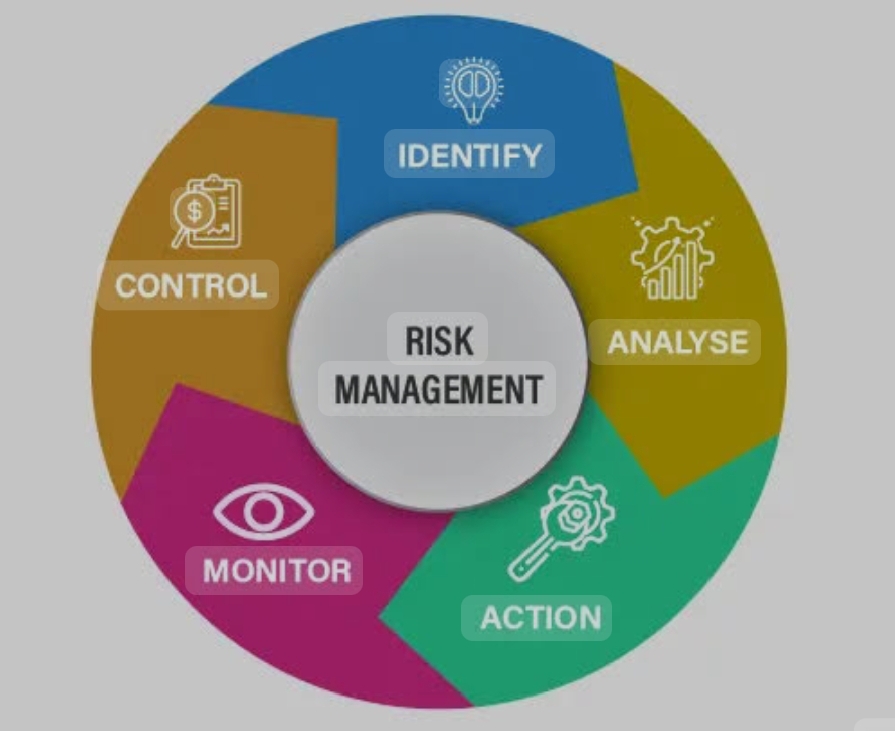The Three Trading Plans and Rules Every Trader Must Have – Part 3
Risk Management Plan
When you hear the word risk, what comes to mind?

A lot of people attach the word risk to a negative experience and only use it when they expect bad things to happen. You hear things like: “It’s too risky”, “there is risk involved I can’t do it”, and “I won’t take a risk”. But what people fail to realize is that there is no human endeavor on the surface of this earth that does not require risk.
There is another set of people who see risk in a manner that is linked with their bad habits, they risk irresponsibly and say “after-all you have to take risks”, not realizing that they are sabotaging themselves.
This brings me to the point of this discussion which focuses on the risk management part of a trading plan. The why and how.
Managing risks sets experienced traders apart from the novice because it is a perfect blend of risk aversion and high-risk appetite, everyone has their risk tolerance, and your job as a trader when building a risk management plan is to focus on your risk tolerance level and adjust, tweak as necessary.
This discussion will take the following forms:
- Amount risk per trade
- System draw-down management
- Trade Management
Amount risk per trade:

How much a trader should risk per trade is very dependent on the risk tolerance of the said trader, the amount of risk doesn’t have anything to do with experience or years of trading because the risk tolerance of someone is very different than anybody else, so I won’t join the bandwagon that says risk 2percent per-trade. But what is important is a trader must have an amount of risk per trade in his trading plan to have a strict set of rules that guide him from making some decisions that can cause ruin to his account.
I don’t have much to say about this particular section, only that a trader must fit his risk per trade to his risk tolerance.
System draw-down management:

Yes, there are times when you will be in drawdown, your system might just not be suitable for the present market conditions and you need to realize this and adjust appropriately, there are steps in doing this and they are as follows
- Identify: You have to know whether it is your system that is just not in great shape at that point or if it is you who is not in great shape and once you find out which is it the next step should be done.
- Scale down: when you are in drawdown you have to cut down on risk because you do not know when the streak of losses will end so you have to slow down the bleeding so you won’t be so far in drawing down that your will to come out of it will diminish totally. In essence what I am saying is that you need to plan how much risk to scale down to while in a drawdown.
- Aim small Targets: when you are in drawdown it is very easy to be discouraged and lose confidence in your ability as a trader, that is why you need to build this confidence back up by taking on small targets’ day by day, easily and low hanging fruits so that you can slowly get back your groove in the market.
Trade Management:

Trade management is another subsect of risk management you need to understand, not many materials are out there on this particular topic, but I will tell you this for free. If you don’t manage your running trades well, you will hurt the bottom line, how so? Let us dive.
Reward Risk Accounting:
If your system allows you a 2:1 reward risk per trade and You mismanage your running trades each time averaging just 1:1 reward risk, what you are doing essentially is hurting your bottom line cause there are times when a trader will face losing days but what will make such a trader stay afloat is the winning days he has had in the past. But if this trader is someone who has been messing with his reward-risk ratio, then you know he is set for a rude awakening.
What I am saying, in essence, is that you need your trade management game to be top-notch cause if you are leaving money on the table, you will hurt the bottom line on days when you face statistical losses.
My Two Cents
I have talked about these 3 main types of trading plan every trader must have and the main focus of this discussion is that we should know that these 3 plans need to be separated and cannot be conjoined as one and be called a general trading plan.
The reason is that a trader needs to know there are 3 things he needs to be aware of that play significant roles in his trading career and separating these 3 things helps him to have a measurable look at them and this will further improve his career as a trader.
Thank You for staying the course of the article, till we meet again next week with a brand-new topic.


